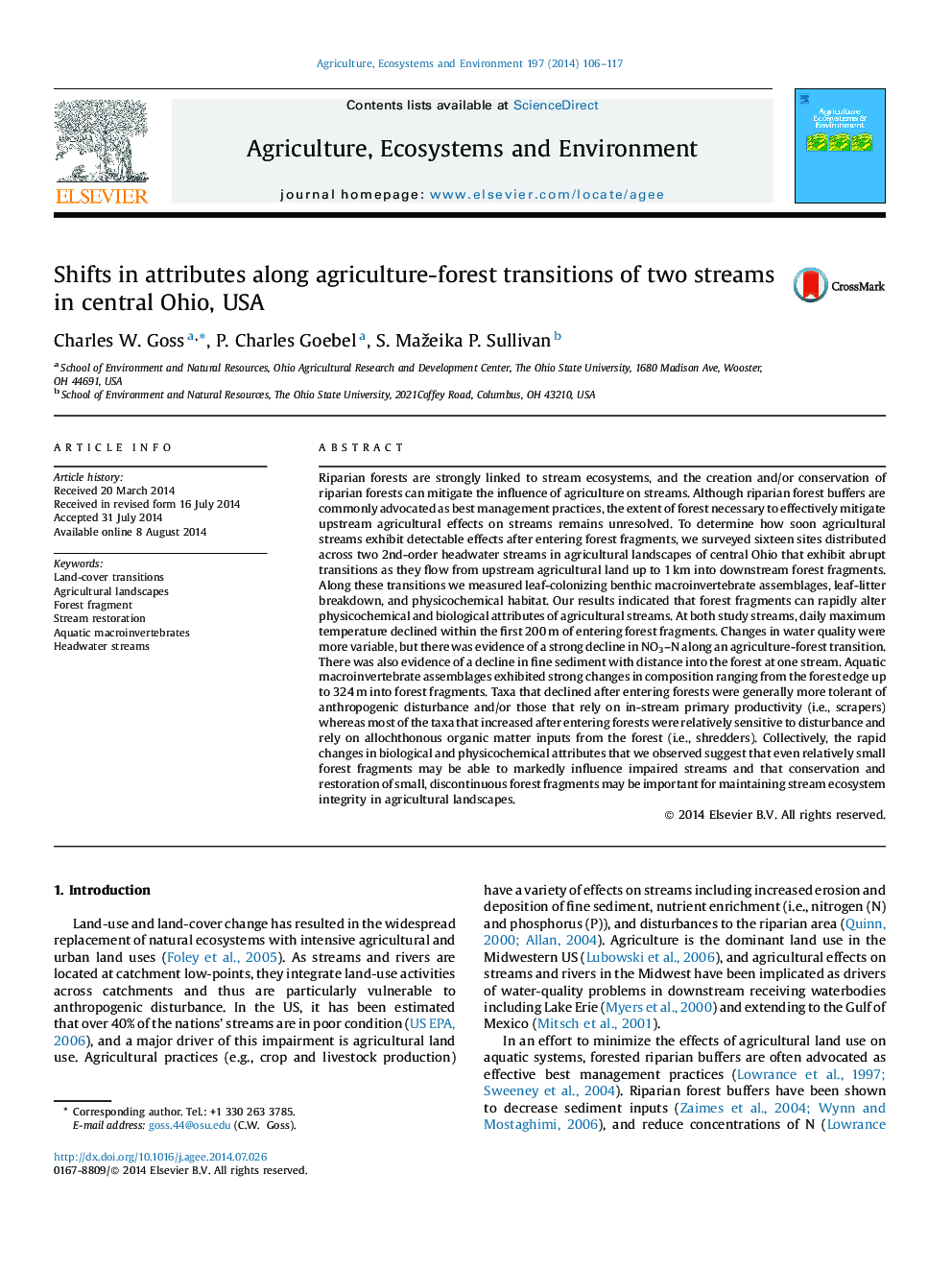| کد مقاله | کد نشریه | سال انتشار | مقاله انگلیسی | نسخه تمام متن |
|---|---|---|---|---|
| 2413813 | 1552055 | 2014 | 12 صفحه PDF | دانلود رایگان |
• We study effects of agriculture-forest transitions on headwater streams.
• We surveyed sixteen sites in two headwater streams embedded in agricultural catchments.
• Temperature, nutrients, and fine sediment rapidly shift after entering forests.
• Shifts in macroinvertebrate composition range from the edge to 324 m into forests.
• Forest fragments can maintain stream integrity in agricultural catchments.
Riparian forests are strongly linked to stream ecosystems, and the creation and/or conservation of riparian forests can mitigate the influence of agriculture on streams. Although riparian forest buffers are commonly advocated as best management practices, the extent of forest necessary to effectively mitigate upstream agricultural effects on streams remains unresolved. To determine how soon agricultural streams exhibit detectable effects after entering forest fragments, we surveyed sixteen sites distributed across two 2nd-order headwater streams in agricultural landscapes of central Ohio that exhibit abrupt transitions as they flow from upstream agricultural land up to 1 km into downstream forest fragments. Along these transitions we measured leaf-colonizing benthic macroinvertebrate assemblages, leaf-litter breakdown, and physicochemical habitat. Our results indicated that forest fragments can rapidly alter physicochemical and biological attributes of agricultural streams. At both study streams, daily maximum temperature declined within the first 200 m of entering forest fragments. Changes in water quality were more variable, but there was evidence of a strong decline in NO3–N along an agriculture-forest transition. There was also evidence of a decline in fine sediment with distance into the forest at one stream. Aquatic macroinvertebrate assemblages exhibited strong changes in composition ranging from the forest edge up to 324 m into forest fragments. Taxa that declined after entering forests were generally more tolerant of anthropogenic disturbance and/or those that rely on in-stream primary productivity (i.e., scrapers) whereas most of the taxa that increased after entering forests were relatively sensitive to disturbance and rely on allochthonous organic matter inputs from the forest (i.e., shredders). Collectively, the rapid changes in biological and physicochemical attributes that we observed suggest that even relatively small forest fragments may be able to markedly influence impaired streams and that conservation and restoration of small, discontinuous forest fragments may be important for maintaining stream ecosystem integrity in agricultural landscapes.
Journal: Agriculture, Ecosystems & Environment - Volume 197, 1 December 2014, Pages 106–117
